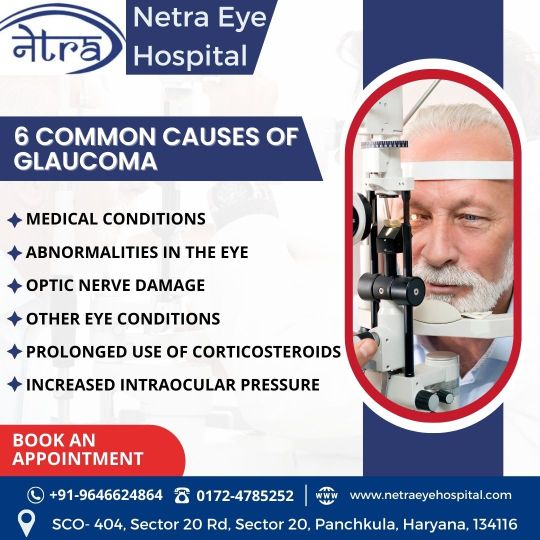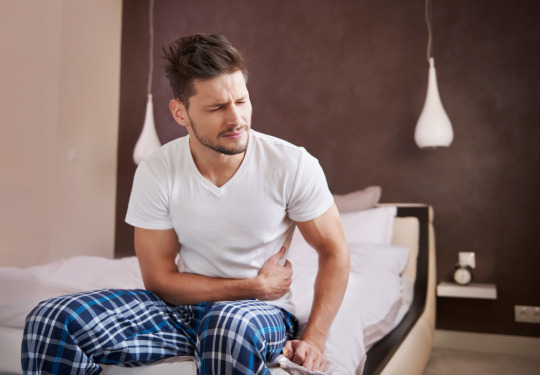#medicalconditions
Explore tagged Tumblr posts
Text
youtube
#healthcare#medicalknowledge#wellnesstips#healthcareinsights#medicalconditions#herbs#herbalmedicine#naturalremedies#medicinalplants#herbaltreatments#herbalremedies#herbalnutrition#herbalhealingjourney#herbalskincare#herbalrecipes#Weight loss tips#Healthy recipes#Healthy eating hacks#Healthy lifestyle habits#Benefits of regular exercise#Cardio exercises for weight loss#Youtube
2 notes
·
View notes
Text
Can hypnotherapy help treat your condition? Click the link for more information.
#richardjdsouzahypnotherapycardiff#hypnosis#hypnotherapy#hypnotherapist#hypnotist#Cardiff#medicalconditions#mentalhealth#treatment#visualisation#relax#recovery#help#rehabilitation#health#lifestyle#wellbeing#mindfulness#healing#medicine#stress#anxiety#clinic#therapy#regression#psychology#counselling#psychotherapy#coaching#change
0 notes
Text
Netra Eye Hospital – 6 Common Causes of Glaucoma

At Netra Eye Hospital, we specialize in the diagnosis and treatment of various eye conditions, including glaucoma. Glaucoma is a serious eye condition that can lead to vision loss if left untreated. Here are 6 common causes of glaucoma:
Medical Conditions: Certain systemic diseases like diabetes, high blood pressure, and heart conditions can increase the risk of glaucoma.
Abnormalities in the Eye: Irregularities in the eye's anatomy can cause glaucoma by obstructing fluid drainage within the eye.
Optic Nerve Damage: Damage to the optic nerve, often caused by high intraocular pressure, can result in glaucoma.
Other Eye Conditions: Eye conditions such as cataracts and eye infections may contribute to the development of glaucoma.
Prolonged Use of Corticosteroids: Long-term use of corticosteroids, particularly in eye drops, can increase the risk of developing glaucoma.
Increased Intraocular Pressure: Elevated pressure inside the eye is the most significant risk factor for glaucoma and can damage the optic nerve over time.
If you are experiencing any symptoms or have a family history of glaucoma, it’s essential to get regular eye check-ups. Book an appointment with us today for a comprehensive eye examination.
Contact Information:
Phone: +91-9646624864 / 0172-4785252 Website: www.netraeyehospital.com Address: SCO-404, Sector 20 Rd, Sector 20, Panchkula, Haryana, 134116 Your eye health is our priority. Visit Netra Eye Hospital for expert care and treatment.
#NetraEyeHospital#Glaucoma#EyeCare#MedicalConditions#IntraocularPressure#OpticNerveDamage#Corticosteroids#EyeHealth#Panchkula#Haryana#BookAnAppointment#VisionCare#EyeTreatment#GlaucomaAwareness
0 notes
Text
Understanding the Underlying Factors of Unintentional Weight Loss

Unintentional weight loss may be of concern and usually points to existing medical disorders. Even though some may at first perceive it in a positive light, looking into the reasons for this shift is essential. Medical assessments reveal that nearly 72% of people experiencing weight loss without a known reason have an underlying condition, meaning it’s important to reach out to a healthcare provider. Definition of Unintentional Weight Loss Unintentional weight loss is a condition in which an individual loses weight without their will. This can happen with a weight loss of 5% or more in a period of 6 months to one year. For example, a 200-pound man would weigh 190 pounds after a 10-pound loss while a 130-pound woman would weigh 123 pounds after 6-7 pounds lost. Weight loss in such a manner is not an outcome of any deliberate steps such as dieting or exercising more. When to Seek Medical Attention Consult a healthcare provider if you experience a 5% to 10% weight loss without intention. Early evaluation is critical, as identifying the underlying causes may require blood tests or imaging studies. Common Causes Several factors can contribute to unintentional weight loss, including: Cancer: A common early indicator, with approximately 40% of cancer patients experiencing weight loss at diagnosis. Diabetes: Especially prevalent in Type 1 diabetes, where weight loss can occur due to insulin issues. Hyperthyroidism: An overactive thyroid accelerates metabolism, leading to weight loss. Muscle Loss: Conditions like cancer or HIV/AIDS can cause significant muscle atrophy, resulting in weight loss. Depression: This can lead to altered eating habits and significant weight changes. Other Causes: Include Addison’s disease, rheumatoid arthritis, infections, digestive issues, and poor nutrition. Diagnosis and Evaluation A thorough medical history and physical examination by your healthcare provider are essential for diagnosing unintentional weight loss. They may ask about: When weight loss started Changes in diet or exercise Other symptoms (e.g., shortness of breath) Previous health screenings Tests and Labs Your provider may order various tests, including: Complete Blood Count (CBC) Thyroid Panel Liver and Kidney Function Tests Blood Sugar Tests Urinalysis Imaging Studies Imaging tests like X-rays, CT scans, and MRIs can help identify potential underlying issues. Treatment Addressing unintentional weight loss involves identifying and treating the underlying cause. Consultation with palliative care may be beneficial for patients with serious conditions like cancer. Summary Unexplained weight loss is often a clue to underlying health issues that require attention. Consult with a healthcare provider to identify the cause and receive appropriate treatment. Frequently Asked Questions What is the most common reason for unintentional weight loss? Cancer is often a leading cause among older adults, while medication-related appetite loss is common in those aged 65 and older. When should I be concerned about weight loss? Weight loss exceeding 10 pounds or 5% of body weight within six to twelve months is concerning. Can unintentional weight loss be reversed? Yes, with proper diagnosis and treatment, weight loss can often be managed or resolved. Should I be concerned about weight loss during pregnancy? Yes, unintentional weight loss during pregnancy should prompt medical evaluation. If you or someone you know is experiencing unexplained weight loss, it's vital to seek medical advice promptly. Early diagnosis and intervention can lead to better health outcomes.
Read more: The underlying factors of unintentional weight loss
#WeightLoss#HealthAwareness#UnintentionalWeightLoss#MedicalConditions#Nutrition#HealthyLiving#MentalHealth#CancerAwareness#Diabetes#ThyroidHealth#Healthcare#Wellness
0 notes
Text

Erectile Dysfunction, also known as impotence, is a common condition and the best available data indicate that 52% of men in the US between 40 and 70 years of age have erectile dysfunction. ED is usually experienced by an adult man above 40 years of age. It means a person is facing difficulty in getting an erection or is not able to maintain an erection long enough to complete the sexual intercourse. Erectile dysfunction is an indication that the patient may be having an underlying problem like heart disease, diabetes, liver disease, or certain other medical conditions. Erectile dysfunction is fairly treatable, and the treatment is dependent on its cause. A few available management options include lifestyle changes, counseling, medicines, testosterone hormone supplement, intracavernosal injections, vacuum devices, and lastly surgery. The treatment strategy varies from patient to patient. Our latest blog post focuses on this issue faced by men and its treatment. https://bit.ly/4fRiv4O
#erectiledycfunction#impotence#adultmanproblem#erectionissue#maintainerection#heartdisease#diabetes#liverdisease#medicalconditions#lifestylechanges#Couneling#medicines#testosteronehormone#injections#vaccumdevices#surgery
0 notes
Text
Understanding the Causes of Low Blood Pressure

Low blood pressure, or hypotension, can result from various factors. Understanding these causes can help in managing and preventing it. Here are some common causes:
Medications: Certain medications, including diuretics, beta-blockers, and antidepressants, can lower blood pressure as a side effect. If you are experiencing low blood pressure, review your medications with your doctor.
Dietary Factors: A diet lacking in essential nutrients, particularly vitamin B12 and folate, can lead to low blood pressure. Maintaining a balanced diet is crucial for healthy blood pressure levels.
Excessive Physical Activity: While regular exercise is beneficial, excessive physical activity can sometimes cause blood pressure to drop. It's essential to balance exercise with adequate rest and nutrition.
Insulin Overproduction: Overproduction of insulin, often seen in people with diabetes, can lower blood pressure. Monitoring and managing blood sugar levels can help prevent this.
Medical Conditions: Conditions such as heart problems, endocrine disorders, severe infection (septicemia), and dehydration can cause low blood pressure. Identifying and treating the underlying condition is key.
Post-Bariatric Surgery: Some individuals may experience low blood pressure after bariatric surgery due to changes in body weight and nutrition absorption.
For more information and personalized advice on managing low blood pressure, you can consult with Dr. Md. Farhan Shikoh, MBBS, MD (Medicine), DM (Cardiology). Visit Sukoon Heart Care, Sainik Market, Main Road, Ranchi, Jharkhand: 834001. Call 6200784486 or visit drfarhancardiologist.com for an appointment.
#LowBloodPressure#Hypotension#HeartHealth#HealthyLiving#NutritionTips#ExerciseBalance#DiabetesManagement#BariatricSurgery#MedicalAdvice#HealthyDiet#HeartCare#BloodPressureManagement#Cardiology#DrFarhanShikoh#RanchiCardiologist#HeartWellness#HealthAwareness#MedicalConditions#Consultation#HeartSpecialist#ranchi
0 notes
Text
Urethral Stricture: Causes, Symptoms, and Treatment
Discovering the complexities of urethral stricture—its causes, symptoms, and treatment options—sheds light on a condition often overlooked. From scar tissue formation due to inflammation or injury to its impact on urinary flow and daily life, understanding this condition is crucial. Explore insights into diagnosis, advancements, and effective management strategies for Urethral Stricture.

What is Urethral Stricture?
The urethra, a vital tube responsible for carrying urine from the bladder out of the body, can sometimes become narrowed due to various factors, leading to a condition known as urethral stricture. This narrowing typically occurs as a result of scar tissue formation, which can restrict urine flow and cause a range of urinary problems.
Understanding Urethral Stricture
A urethral stricture is primarily characterized by the narrowing of the urethral canal, often due to the formation of scar tissue. This scar tissue can develop following:
Inflammation: Conditions such as urinary tract infections (UTIs) or sexually transmitted infections (STIs) can lead to inflammation of the urethra, potentially causing scarring.
Injury: Trauma to the pelvis, such as from accidents, surgical procedures, or prolonged use of catheters, can also damage the urethra and prompt scar tissue formation.
Symptoms of Urethral Stricture
Recognizing the symptoms of urethral stricture is crucial for timely diagnosis and treatment. Common symptoms include:
Weak or slow urine stream: Difficulty in initiating or maintaining a steady flow of urine.
Difficulty starting urination: Often requiring straining to begin urination.
Incomplete bladder emptying: Feeling as though the bladder hasn't fully emptied after urination.
Frequent urination: Urge to urinate more frequently, sometimes with minimal urine output.
Painful urination (dysuria): Discomfort or burning sensation during urination.
Spraying or forked urine stream: Changes in the direction or shape of the urine stream.
Dribbling urine: Leakage of urine after completing urination.
Blood in the urine (hematuria): Occasional presence of blood due to irritation caused by the stricture.
Diagnosis and Evaluation
If symptoms of urethral stricture are suspected, it is essential to consult a healthcare professional, typically a urologist. Diagnosis often involves a combination of medical history, physical examination, and diagnostic tests such as urethroscopy, uroflowmetry, and imaging studies to determine the location and severity of the stricture.
Treatment Options for Urethral Stricture
Treatment for urethral stricture depends on various factors including the severity, location, and individual patient considerations. Common treatment options for urethral stricture include:
Urethral Dilation: A minimally invasive procedure where a thin tube or balloon is inserted into the urethra and inflated to widen the stricture.
Direct Visual Internal Urethrotomy (DVIU): Involves making a small incision in the stricture using a specialized instrument inserted through the urethra.
Urethroplasty: A surgical procedure aimed at surgically removing the scar tissue and reconstructing the urethra, providing a more permanent solution.
Urethral Stents: Temporary placement of a stent to keep the urethra open in select cases.
Intermittent Self-Catheterization: For cases where other treatments are not feasible, this involves regular use of a catheter to drain urine from the bladder.
Recent Advancements in Urethral Stricture
Recent studies have explored innovative approaches such as paclitaxel-coated urethral balloon dilation combined with DVIU, showing promising outcomes especially for bulbar strictures of certain lengths. These advancements aim to improve long-term success rates and patient outcomes compared to traditional treatment methods.
Conclusion
In conclusion, urethral stricture is a condition characterized by the narrowing of the urethra due to scar tissue formation, leading to various urinary symptoms. Early recognition and appropriate treatment, tailored to the individual patient's condition, are crucial in managing this condition effectively. Patients experiencing symptoms suggestive of urethral stricture should seek prompt medical evaluation and consult with a urologist for diagnosis and treatment planning.
#UrethralStricture#UrinaryHealth#Urology#Healthcare#MedicalConditions#TreatmentOptions#ScarTissue#Inflammation#Symptoms#MedicalAdvancements
0 notes
Text
Can the color of urine in Alkaptonuria vary?
Yes, the color of urine in Alkaptonuria can vary from dark brown to black, depending on factors such as hydration level, diet, and individual metabolism. However, the presence of homogentisic acid typically gives the urine a noticeable dark hue. Alkaptonuria is a rare genetic disorder characterized by the body's inability to properly break down certain amino acids, leading to the accumulation of homogentisic acid. This acid causes the characteristic darkening of urine upon exposure to air. Despite its distinct coloration, urine in Alkaptonuria is typically painless and odorless. The condition can be managed with dietary modifications and symptom management, but the cornerstone of treatment often involves the drug Nitisinone. It works by inhibiting the enzyme responsible for the production of homogentisic acid, helping to reduce its levels in the body and alleviate symptoms associated with Alkaptonuria.

#Alkaptonuria#UrineColorChange#MedicalConditions#RareDiseases#GeneticDisorders#MetabolicDisorders#HealthQuestions#MedicalScience#HumanBiology#Genetics#HealthAwareness#AlkaptonuriaAwareness#ScienceExplained#AskScience#HealthFacts#theindianpharma#raredisease
0 notes
Text
Premature Ejaculation 5 Helpful Tips

Premature Ejaculation 5 Helpful Tricks for Your Love Life
Which man doesn't know it? You're just getting into the swing of things, but you couldn't stop yourself... You've already heated things up during foreplay, and now that you're about to get started and want to pounce on each other like animals, you realize after not even 30 seconds that you might come too quickly again. But why again? You consciously focused on your partner this time, approached the whole thing very gently. Anyone affected by premature ejaculation knows this feeling. Premature ejaculation is a very unpleasant experience for every man. Experiencing premature ejaculation once can make you lose your sexual desire and confidence once and for all. Most men are afraid of finding themselves in a similar situation again.

Premature Ejaculation Home Remedies The reasons for premature ejaculation are barely researched. So far, there are only speculations: Some experts imagine that biological factors such as an oversensitive penis or changes in the interaction of hormones and nerves are the cause. Some of them lie in psychological factors such as relationship problems or insecurities. Biological and psychological factors can also be responsible together and influence each other. Some men have been dealing with premature ejaculation since the beginning of their sexual lives. For others, they only occur later in life; then they are referred to as "acquired" premature ejaculations. About 4% of the men worldwirde experience regular premature ejaculation during sex. Premature ejaculation is a well-known and widespread problem for many men. Men affected by this problem often feel very ashamed in front of their partner and just as often feel unmanly. This also results in these men putting a tremendous amount of pressure on themselves and, in not uncommon cases, even completely losing interest in sex. But The good news: Coming too early during sex is not a fate you have to live with. However, you should first come to terms with the fact that something is not going as you imagine it. Then causes need to be found, and in the next step, you can start working on your sexual stamina. Sounds complicated? It's not! We'll show you how to better control your ejaculation. When do you actually speak of "coming too early"? When is coming early actually "too early"? How long should it take between the first penetration into your partner and ejaculation, so that it is not understood as premature ejaculation? According to the definition in medicine, a man has "come too early" if he has ejaculated within a period of about one minute after penetrating his partner. However, this definition does not take into account several factors. - How long did foreplay last? - How aroused was he before penetration? - How long have the two known each other? Ultimately, one can only speak of a problem or a "sexual disorder" if: - It is a recurring "problem." - The man or even the relationship suffers from it. But before we get to our premature ejaculation home remedies, here's a very important tip for preventing premature ejaculation. Talk to each other! It doesn't mean that there's something wrong with you just because you come "too early." Work together and "train" and experiment :-) And in the meantime, there are still some ways you can bring your partner to orgasm in one way or another. It's very important to have fun with it.

Premature Ejaculation Home Remedies Trick Number 1 — Pelvic Floor Training Pelvic floor training is not only a great way for women to increase the quality and intensity of their orgasms. It can also be a great home remedy for men to delay premature ejaculation. Through this training, you gain more control over the tension and relaxation as well as your sensations during sex. Premature Ejaculation Home Remedies Trick Number 2 — Use Your Hips Too Instead of just going through the "in-out" motion during sex, "work" with your pelvis. Circle your pelvis and try something new, you and your partner will surely feel new sensations that you both enjoy. While you "work" with your hips, keep the rest of your body still. This way, you can control your heart rate and won't get aroused as quickly. Premature Ejaculation Home Remedies Trick Number 3 — Use Numbing Condoms Perhaps try condoms that have a slight numbing effect on your member. There are some good reviews for these condoms. One example would be these condoms from Billy Boy. Premature Ejaculation Home Remedies Trick Number 4 — The Start-Stop Method In the so-called "start-stop method," the penis is stimulated during sex until you are on the verge of ejaculation. You probably know this point as the "point of no return." With this method, the act is stopped just before reaching this point, and you wait until your arousal subsides. In the meantime, you can also continue to arouse your partner with your hands or tongue. This method can also be used during masturbation to delay ejaculation. With this method, the man can perceive his arousal better over time and thus better control his ejaculation. Premature Ejaculation Home Remedies Trick Number 5 — Deep and Conscious Breathing Through conscious belly breathing, you can relax yourself and your muscles. A clear advantage is that through deep breathing, you can experience the moment much better, which means you can perceive your body much better and better gauge the point of no return. This will help you with methods such as the start-stop method or other methods such as the squeeze method.

How to Stop Premature Ejaculation If you're wondering how to stop premature ejaculation, there are several techniques and approaches you can try. From pelvic floor exercises to behavioral techniques like the start-stop method, there are methods that can help you gain better control over your ejaculation timing. It's essential to explore these options and find what works best for you and your partner. Pelvic Floor Exercises (Kegels): Strengthening your pelvic floor muscles can help improve your ejaculatory control. Kegel exercises involve contracting and relaxing the muscles that support your pelvic organs. To perform Kegels, identify your pelvic floor muscles by stopping the flow of urine midstream. Once you've located these muscles, contract them for a few seconds, then release. Aim to do several sets of Kegels daily, gradually increasing the duration of each contraction. Behavioral Techniques: Start-Stop Method: During sexual activity, practice the start-stop method by stimulating your penis until you're about to ejaculate, then pause or stop altogether until the urge subsides. Resume sexual activity and repeat as needed. This technique can help you identify your arousal levels and delay ejaculation. Squeeze Technique: Similar to the start-stop method, the squeeze technique involves stimulating your penis until you're close to ejaculation, then having your partner gently squeeze the base of your penis for several seconds. This helps reduce arousal and delay ejaculation. Edging: Edging involves intentionally bringing yourself to the brink of orgasm repeatedly without ejaculating. By practicing edging during masturbation or sexual activity, you can learn to recognize and control your arousal levels, ultimately improving ejaculatory control. Behavioral Therapy: Cognitive-behavioral therapy (CBT) or sex therapy can help address psychological factors contributing to premature ejaculation, such as performance anxiety or relationship issues. A therapist can provide coping strategies, relaxation techniques, and communication skills to enhance sexual satisfaction and confidence. Medications: In some cases, medications such as selective serotonin reuptake inhibitors (SSRIs) or topical anesthetics may be prescribed to delay ejaculation. SSRIs, typically used to treat depression and anxiety, have been found to have a side effect of delaying ejaculation. Topical anesthetics, applied to the penis, can reduce sensitivity and prolong sexual activity. Lifestyle Changes: Making certain lifestyle adjustments can also help manage premature ejaculation. These may include reducing stress, practicing relaxation techniques such as mindfulness or deep breathing exercises, maintaining a healthy diet and exercise routine, and avoiding excessive alcohol or drug use. Communication with Your Partner: Open communication with your partner is key to overcoming premature ejaculation. Discussing your concerns, preferences, and desires can reduce performance pressure and improve intimacy. Experimenting with different sexual activities, positions, and techniques together can also enhance your sexual experiences. What Causes Premature Ejaculation Understanding what causes premature ejaculation is crucial for finding effective solutions. While the exact causes can vary from person to person, factors such as psychological issues, relationship problems, and biological factors like hypersensitivity or hormonal imbalances can contribute to premature ejaculation. By identifying and addressing these underlying causes, you can better manage and overcome premature ejaculation.

Psychological Factors: Stress, anxiety, depression, and performance pressure can all play significant roles in premature ejaculation. For example, performance anxiety related to fears of inadequacy or past negative sexual experiences may contribute to ejaculatory issues. Additionally, psychological conditions such as obsessive-compulsive disorder (OCD) or post-traumatic stress disorder (PTSD) can impact sexual function. Relationship Issues: Poor communication, unresolved conflicts, lack of emotional intimacy, or sexual dissatisfaction within a relationship can lead to premature ejaculation. Addressing relationship dynamics, improving communication skills, and seeking couples therapy may help alleviate these issues. Biological Factors: Various biological factors can contribute to premature ejaculation, including: Hypersensitivity: Some men may have an overly sensitive penis, leading to heightened arousal and quicker ejaculation. Hormonal Imbalances: Imbalances in hormone levels, particularly serotonin, dopamine, and testosterone, can affect ejaculatory control. Neurological Factors: Conditions affecting the nervous system, such as multiple sclerosis (MS) or nerve damage from injury or surgery, may disrupt signals between the brain and genitalia, leading to premature ejaculation. Genetic Predisposition: There may be a genetic component to premature ejaculation, with certain individuals predisposed to ejaculatory issues. Medical Conditions: Certain medical conditions, such as prostate problems, thyroid disorders, or urinary tract infections, can contribute to premature ejaculation. Treating underlying medical issues may help improve ejaculatory function. Lifestyle Factors: Lifestyle choices such as excessive alcohol consumption, smoking, drug use, or poor dietary habits may impact sexual function and contribute to premature ejaculation. Adopting a healthier lifestyle through regular exercise, balanced nutrition, and stress management techniques can support overall sexual health. How to Cure Premature Ejaculation While there's no one-size-fits-all cure for premature ejaculation, there are various treatments and strategies that can help you manage and reduce its impact on your sex life. From therapy and counseling to medications and lifestyle changes, there are options available depending on the severity of your condition. It's essential to consult with a healthcare professional to determine the most suitable treatment plan for you. Home Remedy for Premature Ejaculation In addition to medical treatments, there are also natural home remedies that may help alleviate premature ejaculation symptoms. Techniques such as deep breathing exercises, pelvic floor exercises, and herbal supplements have been reported to have positive effects for some individuals. However, it's essential to approach these remedies with caution and consult with a healthcare provider before trying them. Do you have any other home remedies that can help to not come too early? Feel free to write them in the comments. Read the full article
#behavioraltherapy#biologicalfactors#causesprematureejaculation#communication#cureprematureejaculation#geneticpredisposition#homeremedies#hormonalimbalances#hypersensitivity#lifestylechanges#lifestylefactors#medicalconditions#medications#neurologicalfactors#pelvicfloorexercises#prematureejaculation#psychologicalfactors#relationshipissues#squeezetechnique#start-stopmethod#stopprematureejaculation
0 notes
Text

MAXIMIZE YOUR SURGICAL OUTCOMES - Dr. Kunaal Shinde
Seeking optimal surgical outcomes? Maximize your results with laparoscopic surgery techniques. From gynecological procedures to a range of surgeries, our experts are here to guide you. Schedule a consultation today!
Book an appointment today!!!
Call: +91 7507351235
#DrKunaalShinde#KunaalShinde#MedicoverHospital#medicover#bhosari#pune#pcmc#gynecologist#laparoscopicsurgeon#LaparoscopySurgery#MedicalConditions#ExpertCare#TreatmentOptions#Healthcare"#LaparoscopicSurgery#Gynecology
0 notes
Link
0 notes
Text
Next wave in managing chronic medical conditions, ET HealthWorld


By Aditya Kaicker In the realm of healthcare, technology has emerged as a powerful catalyst for positive change. One area where this transformation is particularly evident is in the reversal of diabetes, specifically type 2 diabetes. Health technology, encompassing innovative tools and applications, is paving the way for effective diabetes management and remission. Moreover, these technological advancements are not only shaping treatment strategies but also enhancing consumer adherence to diabetes remission programs. Type 2 diabetes is a chronic metabolic disorder characterised by insulin resistance and elevated blood sugar levels. Traditionally, its management has primarily relied on medication, diet modification, and lifestyle changes. However, the quest for more sustainable solutions, including diabetes remission, has spurred the integration of health technology into diabetes care. Health technology, from mobile apps and wearable devices to telemedicine platforms, is revolutionising diabetes management. These tools not only facilitate real-time monitoring of blood glucose levels but also empower individuals to take control of their health and make informed decisions. In the context of diabetes remission, health technology serves as a comprehensive support system that enhances the effectiveness of lifestyle interventions. Some examples of how technology is revolutionising Diabetes care are as below - 1. Telemedicine Platforms connect individuals with healthcare professionals such as Doctors, Diabetes Educators and Dieticians virtually, enabling remote consultations and continuous guidance. This is particularly useful in diabetes remission programs, as regular check-ins and adjustments to treatment plans can be efficiently managed without the need for frequent in-person visits. 2. Mobile Applications offer a plethora of features, from tracking food intake and exercise to providing personalised meal plans. These apps also offer educational resources, fostering better understanding of the factors influencing diabetes. For diabetes remission, apps help individuals adhere to prescribed dietary guidelines and activity levels. Using AI, these applications can suggest better and sustainable ways to create long-lasting habits. 3. An Online Community for support and guidance during a program that typically lasts a few months becomes essential to drive the motivation during times when adherence might fall. Having this social aspect leads to a fun and non-judgmental environment, which helps users get insight into each other’s routines, as well as get inspired by their journey. 4. Wearable Trackers can help monitor physical activity (smartwatches) or real-time insights into their glucose levels (CGMS). This encourages consistent exercise, a cornerstone of diabetes remission programs. The CGMS can enable proactive management, ensuring that dietary and activity adjustments can be made promptly to maintain stable blood sugar levels. Furthermore, these devices seamlessly integrate with apps, creating a holistic ecosystem for health management. The effectiveness of any healthcare intervention, including diabetes remission programs, heavily relies on consumer adherence. Adherence to prescribed dietary changes, exercise routines, and medication schedules can significantly impact outcomes. Unfortunately, sustaining these lifestyle modifications can be challenging. This is where health technology steps in to bridge the gap. Health technology offers tailored interventions that cater to an individual's preferences, habits, and goals. These personalised approaches increase engagement and motivation, as individuals feel that their unique needs are being addressed. Immediate feedback provided by health technology tools or health coaches using online platforms helps users understand the direct impact of their actions on their health. For instance, a mobile app can show how a particular meal affects blood sugar levels, enabling informed decisions. Many health apps incorporate gamified elements, turning health management into an interactive experience. Achievements, rewards, and challenges make adhering to diabetes remission programs enjoyable and encourage consistent participation. These platforms often offer communities or forums where users can connect, share experiences, and provide mutual support. This sense of community fosters accountability and encourages individuals to stay committed to their diabetes remission journeys. The synergy between health technology and diabetes reversal has the potential to reshape the landscape of chronic disease management. Continuous glucose monitoring systems, mobile apps, wearable fitness trackers, and telehealth platforms provide individuals with tools to actively engage in their health and make informed decisions. Furthermore, the challenge of consumer adherence is being addressed through personalised interventions, real-time feedback, gamified elements, and social support mechanisms. As technology continues to evolve, the possibilities for diabetes reversal and improved consumer adherence are boundless. Through the effective utilisation of health technology, individuals can not only manage diabetes but also work towards reversing the condition and achieving better health outcomes. As healthcare professionals, researchers, and developers collaborate, health technology's impact on diabetes remission will likely lead to more successful and sustainable interventions, transforming lives and redefining the future of diabetes management. Next wave in managing chronic medical conditions, ET HealthWorld Read the full article
#AdityaKaicker#chrissymetzweightloss#chronic#chronicmetabolicdisorder#conditions#diettips#DigitalTherapeutics#health#healthnews#healthtips#healthit#HealthWorld#loseweightfast#managing#medical#medicalconditions#rebelwilsonweightloss#wave#weightlose#weightlossdiet#weightlosstips
0 notes
Text

Guiding You Through the Journey of High-Risk Obstetrics with Expert Care and Compassion.
Our highly skilled professionals are experienced in managing a wide range of high-risk conditions, such as gestational diabetes, hypertension, multiple pregnancies, maternal age-related risks, fetal abnormalities, repeated abortion, and pre-existing medical conditions. We employ advanced diagnostic tools and technologies to closely monitor both maternal and fetal health, ensuring the highest level of safety and well-being for both you and your baby.
Read More: https://rathibrighthopeivf.com/
#HighRiskObstetrics#ExpertCare#CompassionateSupport#MaternalHealth#FetalHealth#PrenatalMonitoring#Hypertension#MaternalAge#MedicalConditions#PregnancySafety
0 notes
Link
The sternoclavicular joint connects the collarbone to the breastbone and is responsible for shoulder movement. Swelling in this joint can be a symptom of various health conditions, including cancer. 🤔 Cancer-related sternoclavicular joint swelling is often caused by metastasis, where cancer cells spread from their primary site to the joint. This swelling may be accompanied by pain, tenderness, and difficulty moving the shoulder. 😣 Early detection of sternoclavicular joint swelling is crucial, as it can help identify the underlying cancer and guide appropriate treatment. If you notice any unusual swelling or discomfort in this area, it's important to consult a healthcare professional for a thorough evaluation. 🩺1. Understanding the Sternoclavicular Joint: Key Anatomy and FunctionThe sternoclavicular joint is a vital connection between the sternum and clavicle. 🦴 It allows for the movement of the shoulder and provides stability to the upper body. Key anatomical structures include the clavicle, sternum, and the cartilage that cushions the joint. Ligaments and tendons hold everything together, allowing for smooth motion. 💪 Understanding the function of the sternoclavicular joint is crucial in diagnosing and treating injuries. It enables us to perform activities like lifting, pushing, and carrying objects. 🏋️♂️ The joint's range of motion includes elevation, depression, protraction, retraction, and rotation. It is responsible for shoulder movements such as raising your arm or rotating it in different directions. 🔄 Injuries to the sternoclavicular joint can occur due to trauma, repetitive movements, or sports-related activities. Common injuries include dislocations, sprains, and fractures. 🤕 Proper understanding of the sternoclavicular joint's anatomy and function is essential for healthcare professionals and individuals seeking to prevent or treat shoulder injuries. 🩺 It allows for targeted exercises, rehabilitation, and effective treatment plans. 👍2. Identifying Sternoclavicular Joint Swelling: Common Causes and SymptomsCommon causes of sternoclavicular joint swelling include trauma, infection, arthritis, and inflammation. Symptoms may include pain, swelling, redness, limited range of motion, and tenderness. 🤕 Injuries, such as dislocations or fractures, can result in immediate swelling and severe pain. Infections, like osteomyelitis or septic arthritis, may cause swelling accompanied by fever and warmth. 🔥 Arthritis, such as rheumatoid arthritis or osteoarthritis, can lead to chronic swelling, stiffness, and discomfort. Inflammatory conditions like costochondritis or Tietze syndrome may cause localized swelling and sharp chest pain. ⚡ Diagnosis of sternoclavicular joint swelling involves physical examination, imaging tests like X-rays or MRI, and sometimes blood work. Treatment options vary depending on the cause and severity, ranging from rest, ice, and pain medication to physical therapy or surgery. 💊 It is important to seek medical attention if you experience sternoclavicular joint swelling to determine the underlying cause and receive appropriate treatment. Early intervention can help prevent further complications and promote a faster recovery. 🏥3. Exploring the Link between Sternoclavicular Joint Swelling and CancerSwelling in the sternoclavicular joint can be a potential indicator of an underlying cancerous condition. 🩺 Several studies have found a significant association between sternoclavicular joint swelling and various types of cancer, including lung, breast, and lymphoma. Early detection of sternoclavicular joint swelling is crucial for timely diagnosis and treatment of cancer. Regular self-examination and seeking medical attention for persistent swelling can help identify potential malignancies. Diagnostic tests such as imaging scans, biopsies, and blood tests are commonly used to confirm the presence of cancer in individuals with sternoclavicular joint swelling. Treatment options for cancer-related sternoclavicular joint swelling depend on the type and stage of cancer. They may include surgery, radiation therapy, chemotherapy, targeted therapy, or a combination of these approaches. It is important to note that sternoclavicular joint swelling can also be caused by non-cancerous conditions such as infections, inflammation, or trauma. However, it is always recommended to consult a healthcare professional for proper evaluation and diagnosis.4. Recognizing Early Warning Signs: Cancer Symptoms Associated with Sternoclavicular Joint SwellingEarly recognition of cancer symptoms associated with sternoclavicular joint swelling is crucial for timely diagnosis and treatment. Common warning signs include: Unexplained swelling or tenderness in the sternoclavicular joint area Persistent pain or discomfort that worsens over time Difficulty moving the affected joint Visible lumps or bumps around the sternoclavicular joint Redness, warmth, or inflammation in the joint area If you experience any of these symptoms, it's important to consult a healthcare professional for further evaluation and appropriate medical intervention. Remember, early detection can significantly improve the chances of successful treatment and recovery. Stay vigilant and take care of your health! 🩺💪5. Diagnostic Tools and Tests: How to Determine if Sternoclavicular Joint Swelling is Cancer-RelatedWhen investigating sternoclavicular joint swelling, several diagnostic tools and tests can help determine if it is cancer-related: Imaging tests: X-rays, CT scans, and MRI can provide detailed images of the joint and surrounding tissues. Biopsy: A sample of the swollen tissue may be taken for examination under a microscope to identify cancer cells. Blood tests: Certain markers in the blood can indicate the presence of cancer. Ultrasound: This non-invasive test uses sound waves to create images of the joint, aiding in diagnosis. It's important to consult a healthcare professional for an accurate diagnosis. Early detection 🕵️♀️ can significantly improve treatment outcomes and prognosis.6. Treatment Options for Sternoclavicular Joint Swelling Caused by CancerThere are several treatment options available for sternoclavicular joint swelling caused by cancer: Chemotherapy: Administering powerful drugs to kill cancer cells throughout the body. Radiation therapy: Using high-energy beams to target and destroy cancer cells in the affected area. Surgery: Removing the tumor and affected tissues in the sternoclavicular joint. Immunotherapy: Boosting the body's immune system to recognize and attack cancer cells. Pain management: Utilizing medications, physical therapy, or alternative therapies to alleviate discomfort. It's crucial to consult with a healthcare professional to determine the most suitable treatment plan for individual cases. 🩺💪7. Prognosis and Outlook: Managing Sternoclavicular Joint Swelling in Cancer PatientsManaging sternoclavicular joint swelling in cancer patients requires a comprehensive approach. 🩺 1. Early detection and prompt treatment are crucial in preventing complications and improving outcomes. 2. Non-surgical interventions, such as physical therapy and pain management, can help alleviate symptoms and improve joint function. 3. In some cases, surgical options may be necessary, including joint aspiration or joint replacement surgery. 4. Collaborative care between oncologists, rheumatologists, and orthopedic specialists is essential for optimal management. 5. Regular monitoring and follow-up appointments are necessary to track progress and adjust treatment plans as needed. 6. Patient education plays a vital role in promoting self-care and adherence to treatment strategies. 7. Prognosis varies depending on the underlying cancer and individual patient factors, but early intervention can lead to better outcomes. 8. Emotional support and counseling services should be available to address the psychological impact of joint swelling on cancer patients. In conclusion, sternoclavicular joint swelling can be a potential symptom of cancer. It is crucial to seek medical attention if you experience persistent swelling, pain, or discomfort in this area. 🚨 Early diagnosis and treatment can significantly improve the prognosis and overall outcome. Remember, your health is priceless! 💪🏻 Stay vigilant and prioritize regular check-ups to ensure your well-being. 🩺🌟 https://symptomfinder.com/sternoclavicular-joint-swelling-cancer-symptoms/?_unique_id=64a0923a14bf3
#Uncategorised#cancerawareness#cancersymptoms#jointpain#medicalconditions#sternoclavicularjointswelling#aiomatic_0
0 notes
Text
The Secret to Better Sleep: Tips and Tricks

Do you ever feel like you're just not getting enough sleep? Like you're constantly tired, no matter how much you sleep? If so, you're not alone. Millions of people around the world struggle with sleep problems. There are many reasons why people have trouble sleeping. Some of the most common reasons include stress, anxiety, depression, medical conditions, and poor sleep habits. If you're having trouble sleeping, there are several things you can do to improve your sleep quality. In this blog post, we will discuss some of the best tips and tricks for better sleep.
Tips and Tricks for Better Sleep
1. Stick to a regular sleep schedule. Go to bed and wake up at the same time each day, even on weekends. This will help to regulate your body's natural sleep-wake cycle. 2. Create a relaxing bedtime routine. This could include taking a warm bath, reading a book, or listening to calming music. Avoid watching TV or using electronic devices in the hour before bed, as the blue light emitted from these devices can interfere with sleep. 3. Make sure your bedroom is dark, quiet, and cool. Darkness helps to promote the production of melatonin, a hormone that helps to regulate sleep. Noise and light can disrupt sleep, so make sure your bedroom is as dark and quiet as possible. A cool temperature is also ideal for sleep. 4. Avoid caffeine and alcohol before bed. Caffeine and alcohol can interfere with sleep. Caffeine is a stimulant that can make it difficult to fall asleep. Alcohol may help you fall asleep initially, but it can disrupt sleep later in the night. 5. Exercise regularly. Exercise can help to improve sleep quality. However, avoid exercising too close to bedtime, as this can make it difficult to fall asleep. 6. Get regular sunlight exposure. Sunlight helps to regulate your body's natural sleep-wake cycle. Get at least 30 minutes of sunlight exposure each day. 7. See a doctor if you have trouble sleeping. If you've tried the above tips and you're still having trouble sleeping, talk to your doctor. There may be an underlying medical condition that's causing your sleep problems.
Conclusion
Getting a good night's sleep is essential for your physical and mental health. If you're having trouble sleeping, there are several things you can do to improve your sleep quality. By following the tips and tricks in this blog post, you can get the restful sleep you need to feel your best. Here are some additional tips that may help you get a good night's sleep: - Avoid napping during the day. - Make sure your mattress and pillows are comfortable. - If you're feeling stressed, try relaxation techniques such as deep breathing or meditation. - Create a positive sleep environment by decluttering your bedroom and making it a place where you feel relaxed and comfortable. - If you're still having trouble sleeping after trying these tips, talk to your doctor. There may be an underlying medical condition that's causing your sleep problems. Read the full article
#anxiety#bettersleep#depression#insomnia#medicalconditions#poorsleephabits#sleep#sleepproblems#sleeptips#stress
0 notes
Text
Underlying Contributors to Weight Control: Unraveling the Mystery
Uncover the underlying contributors to weight control and learn how to manage them effectively. Explore the mystery behind weight control. Read More

You understand how irritating it may be if you’ve ever had trouble controlling your weight. While the conventional advice of “eat less, move more” seems straightforward, it often falls short. The fact is that there are multiple underlying contributors to weight control, and knowledge of these factors is crucial for sustained success.
#weightcontrol#obesityprevention#healthyhabits#fitnessmotivation#bodyweightregulation#medicalconditions#publichealthawareness#preventivehealth#behaviorchange#wellnessjourney
0 notes